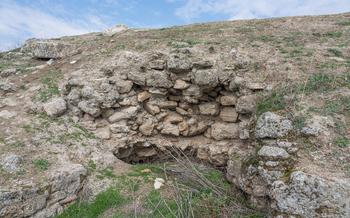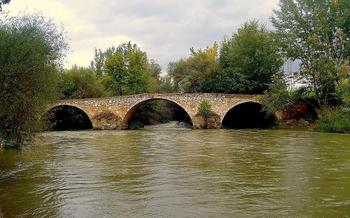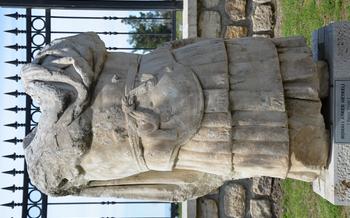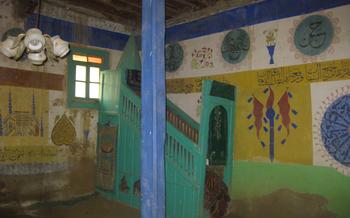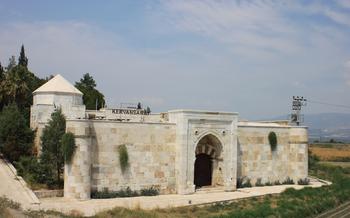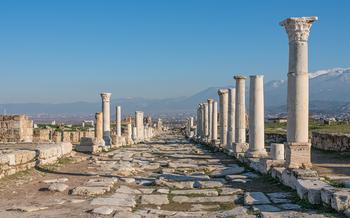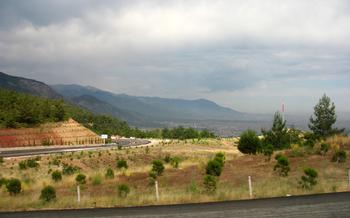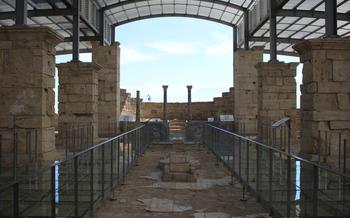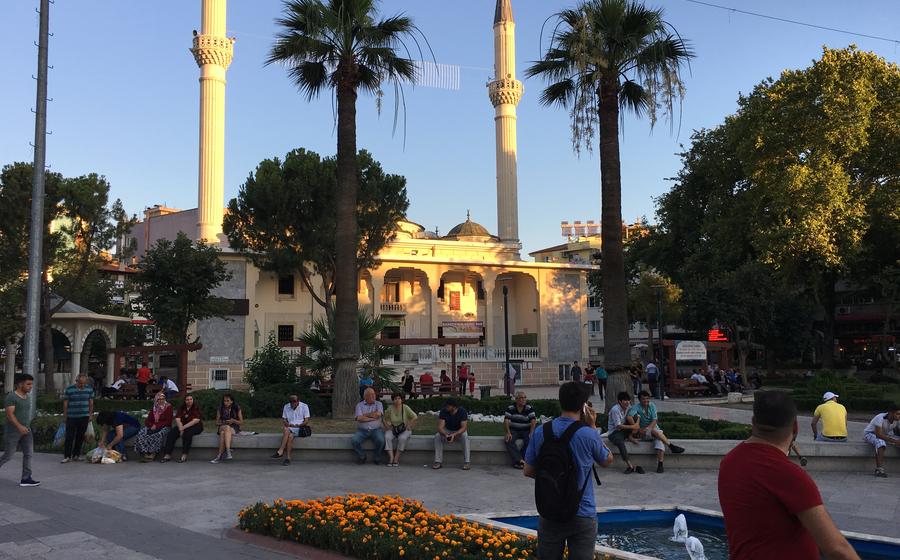
Aktepe Hill
- Aktepe Hill: A Majestic Panorama
- Ascending the Hill: A Scenic Journey
- The Ancient City of Laodicea: Unveiling History
- Mesmerizing Views from the Summit
- Exploring the Hill's Natural Wonders
- Aktepe Hill's Cultural Significance
- The Hill's Role in Local Economy
- Aktepe Hill's Gastronomic Delights
- Unique Accommodation Options
- Exploring the Surrounding Area
- Planning Your Visit: Essential Tips
- Capturing the Beauty: Photography Tips
- Safety and Accessibility
- Aktepe Hill's Historical Legacy
Aktepe Hill: A Majestic Panorama
Aktepe Hill stands as a majestic natural wonder and a site of historical significance in Denizli, Turkey. Its strategic location on the ancient Silk Road, connecting the East and the West, has played a crucial role in shaping its rich cultural heritage. The hill offers breathtaking panoramic views of the stunning landscape, encompassing the vibrant city of Denizli, the picturesque Babadag Mountain, and the mesmerizing Aegean Sea. Aktepe Hill serves as a testament to the region's rich cultural tapestry, with its ancient ruins, traditional villages, and vibrant local customs, inviting visitors to explore its captivating allure.
Ascending the Hill: A Scenic Journey
Aktepe Hill offers a diverse range of transportation options, catering to different preferences and physical abilities. For a leisurely and scenic ascent, visitors can opt for a cable car ride, which provides breathtaking views of the surrounding landscape. Alternatively, hiking enthusiasts can embark on a challenging yet rewarding trek through the winding trails that lead to the summit. These trails offer a unique opportunity to immerse oneself in the hill's natural beauty, encountering diverse flora and fauna along the way.
As you ascend the hill, be sure to pause at various points to soak in the panoramic vistas that unfold before you. Capture the picturesque beauty of the Denizli cityscape, framed by the majestic Babadag Mountain in the distance. The ever-changing scenery, with its interplay of light and shadow, promises a truly unforgettable experience.
The Ancient City of Laodicea: Unveiling History
Aktepe Hill proudly stands adjacent to the ancient city of Laodicea, a remarkable site steeped in historical significance. Founded in the 3rd century B.C. by the Seleucid king Antiochus II, Laodicea flourished as a major trading hub and administrative center. Excavations have unearthed an array of impressive ruins, including a well-preserved theater, an elaborate stadium, and the remains of temples, churches, and baths. The city's remarkable urban plan, featuring colonnaded streets and a sophisticated water supply system, showcases the advanced engineering prowess of its ancient inhabitants.
As you wander through the ruins of Laodicea, you'll be transported back in time, imagining the bustling streets, vibrant markets, and the echoes of a glorious past. The theater, with its intricate carvings and impressive acoustics, evokes images of ancient performances and spectacles. The stadium, once hosting athletic competitions and gladiator fights, stands as a testament to the city's sporting traditions.
Laodicea's religious significance is evident in the remains of several churches, including the impressive Church of St. John the Theologian. With its grand dimensions and intricate mosaics, this church once served as a prominent center of Christian worship. The city's Jewish heritage is also represented by a well-preserved synagogue, offering a glimpse into the diverse religious landscape of ancient Laodicea.
Exploring the ruins of Laodicea is like embarking on a journey through time, where each stone holds a story, and every corner reveals a new chapter in the city's rich and fascinating history.
Mesmerizing Views from the Summit
Aktepe Hill offers breathtaking panoramic vistas that will leave you spellbound. From the summit, the bustling city of Denizli unfolds beneath your feet, revealing a tapestry of urban landscapes and vibrant neighborhoods. The majestic Babadag Mountain stands tall in the distance, its snow-capped peaks piercing the azure sky. Every turn you take on the hill unveils a new perspective, allowing you to witness the awe-inspiring natural beauty that surrounds this region. Lush forests, rolling hills, and sprawling valleys paint a picturesque panorama that will remain etched in your memory long after your visit.
Exploring the Hill's Natural Wonders
Aktepe Hill boasts a wealth of natural wonders that captivate visitors with their beauty and diversity. The hill's unique geological formations, shaped by centuries of erosion, create a mesmerizing landscape. Visitors can explore caves and rock formations, each with its own unique charm. The hill's diverse flora and fauna add to its natural allure, with a variety of plant species and wildlife species calling the hill their home. Aktepe Hill is also a haven for biodiversity conservation, as it provides a habitat for many endangered and threatened species.
Aktepe Hill's Cultural Significance
Aktepe Hill holds immense cultural significance, deeply intertwined with the region's rich history and traditions. In ancient times, the hill served as a sacred site for various rituals and ceremonies, with locals gathering to pay homage to their deities and seek blessings. These ancient practices have left an indelible mark on the hill's cultural heritage.
Throughout the centuries, Aktepe Hill has played a pivotal role in local festivals and events. The annual Aktepe Hill Festival, held during the summer months, attracts visitors from far and wide to celebrate the region's vibrant culture. Traditional music, dance performances, and local delicacies fill the air as the hill transforms into a lively hub of cultural expression.
Beyond its historical significance, Aktepe Hill is deeply embedded in the local traditions and beliefs of the Denizli region. Folk tales and legends passed down through generations speak of mythical creatures and supernatural occurrences associated with the hill, adding an air of mystery and enchantment. The hill's unique natural features have also inspired local artists, writers, and musicians, who find endless inspiration in its beauty and grandeur.
The Hill's Role in Local Economy
Aktepe Hill is not only a natural and cultural wonder but also plays a significant role in the local economy. Tourism is a primary industry, with visitors flocking to the hill to experience its breathtaking views, historical sites, and natural wonders. This influx of tourism has led to the development of a vibrant hospitality sector, including hotels, restaurants, and cafes.
Agriculture is another important economic activity in the region. The fertile slopes of the hill are home to vineyards, olive groves, and orchards, producing fresh produce and contributing to the local economy. Farmers also raise livestock, such as sheep and goats, providing a source of income and sustenance.
Handicrafts and souvenirs are also popular among tourists visiting Aktepe Hill. Local artisans create intricate carpets, pottery, and jewelry, showcasing the region's rich cultural heritage. These items serve as cherished mementos for visitors and generate income for the local community.
Overall, Aktepe Hill's unique blend of natural beauty, historical significance, and cultural heritage has made it an important economic driver for the region. It provides diverse opportunities for locals, from tourism and hospitality to agriculture and handicrafts, contributing to the overall prosperity of the community.
Aktepe Hill's Gastronomic Delights
Aktepe Hill is not only a haven for history buffs and nature enthusiasts but also a paradise for food lovers. The region boasts a rich culinary tradition that blends flavors from various cultures, creating a tantalizing gastronomic experience.
Local cuisine takes center stage, showcasing traditional dishes that have been passed down through generations. Sample the delectable "keşkek," a hearty dish made from lamb, wheat, and spices, or savor the aromatic "manti," succulent dumplings filled with minced meat and topped with yogurt sauce.
Indulge in the region's famous "lahmacun," a crispy flatbread topped with minced meat, vegetables, and spices, or tantalize your taste buds with "gözleme," a savory pastry filled with spinach, cheese, or potatoes.
For a sweet treat, try the irresistible "lokma," bite-sized doughnuts drenched in syrup, or the delectable "künefe," a traditional dessert made with shredded pastry, cheese, and syrup.
Enjoy these culinary delights at one of the many restaurants and cafes scattered around Aktepe Hill, offering panoramic views and a chance to soak in the region's ambiance while savoring its flavors.
Unique Accommodation Options
Aktepe Hill offers a range of unique accommodation options that cater to different tastes and preferences. Boutique hotels nestled amidst the natural beauty provide a luxurious and serene experience, with breathtaking views and modern amenities. Traditional guesthouses offer a more authentic and immersive stay, allowing visitors to connect with the local culture and traditions.
These accommodations often feature panoramic views, allowing guests to wake up to stunning vistas of the surrounding landscape. The rustic charm of traditional guesthouses and the modern elegance of boutique hotels blend seamlessly with the natural surroundings, creating a truly unforgettable experience.
When selecting your accommodation, consider factors such as your budget, desired level of comfort, and preferred style. Whether you seek a luxurious retreat or a more authentic cultural experience, Aktepe Hill has something to offer every traveler.
Exploring the Surrounding Area
Aktepe Hill's allure extends beyond its own boundaries, inviting visitors to explore the rich tapestry of attractions that dot its surroundings. Nature enthusiasts will find solace in the nearby national parks, home to diverse flora and fauna. History buffs can delve into the ancient city of Hierapolis, with its well-preserved ruins and thermal springs. For those seeking adventure, paragliding from Babadag Mountain offers unparalleled views of the region. And if relaxation is on your mind, the serene waters of Lake Salda, known for its striking resemblance to the Maldives, await. With so much to offer, the area around Aktepe Hill is a treasure trove of experiences, promising a journey through history, nature, and adventure.
Planning Your Visit: Essential Tips
Best time to visit: Aktepe Hill offers different experiences throughout the year. The spring months (April-May) showcase blooming flowers and mild temperatures, while the summer months (June-August) provide clear skies and warm evenings. Autumn (September-October) brings vibrant fall colors and pleasant temperatures, while winter (November-March) brings snow-capped views and the opportunity for skiing and snowboarding nearby.
Weather conditions: Be prepared for varying weather conditions, especially in the winter months when temperatures can drop significantly. Pack layers of clothing to adjust to changing weather. Summer temperatures can reach up to 35°C, so sunscreen, a hat, and sunglasses are essential.
Packing essentials: Comfortable hiking shoes or sneakers are a must for exploring the hill's trails. Bring a camera to capture the stunning views, and consider binoculars to enhance your wildlife spotting experience. Don't forget essentials like water, snacks, a first-aid kit, and a flashlight if you plan to hike after dark.
Local customs and etiquette: Aktepe Hill is a popular destination for both locals and tourists. Be respectful of local customs and traditions, such as greeting people with a handshake or a nod. When visiting religious sites, dress modestly and follow the local customs.
Capturing the Beauty: Photography Tips
Aktepe Hill offers a plethora of photographic opportunities, capturing its natural splendor and rich cultural heritage. To ensure your shots are worthy of this majestic destination, here are some valuable tips:
-
Embrace the Golden Hours: The soft, warm light of sunrise and sunset paints Aktepe Hill in a magical glow, creating an ideal backdrop for your photographs. Plan your visit accordingly to witness these breathtaking moments and capture the hill's beauty at its peak.
-
Play with Composition: Experiment with different angles and perspectives to create visually striking images. Utilize leading lines, such as roads or trails, to draw the viewer's eye into the frame. Incorporate elements like trees, flowers, or historical ruins to add depth and interest to your compositions.
-
Master Your Camera Settings: Understanding your camera's settings is crucial for capturing the perfect shot. Adjust the aperture, shutter speed, and ISO to control the depth of field, motion blur, and overall exposure. Experiment with different settings to find the optimal combination for your desired effect.
-
Embrace Post-Processing: Once you've captured your shots, don't hesitate to enhance them with photo editing software. Simple adjustments to brightness, contrast, and color can elevate your images, bringing out their true potential. Utilize editing tools to remove unwanted elements, correct exposure, and add a touch of personal style.
Safety and Accessibility
Safety Precautions:
- Prioritize safety by adhering to marked trails, avoiding venturing off alone, and being mindful of potential hazards like uneven terrain, loose rocks, and wildlife.
- Stay informed about weather conditions and adjust plans accordingly.
- Carry essential supplies like water, snacks, sunscreen, and a first-aid kit.
Accessibility for Differently-abled Visitors:
- Aktepe Hill offers accessible trails and viewing platforms for visitors with disabilities.
- Wheelchairs and mobility scooters can navigate designated routes, allowing everyone to enjoy the hill's splendor.
Emergency Contacts:
- Keep local emergency numbers handy, such as the police, ambulance, and fire department.
- Inform someone about your planned hiking route and expected return time.
Local Regulations:
- Respect local regulations and customs, including designated camping areas and restricted zones.
- Follow guidelines for preserving the natural environment, such as refraining from littering and disturbing wildlife.
Aktepe Hill's Historical Legacy
Aktepe Hill is a site of profound historical significance, having borne witness to the rise and fall of civilizations throughout the ages. Archaeological excavations have unearthed evidence of ancient settlements dating back to the Bronze Age, indicating the hill's strategic importance as a defensive stronghold. In the Hellenistic period, the city of Laodicea was founded at the foot of the hill and flourished as a major trade and cultural center. The ruins of this ancient metropolis, including the well-preserved amphitheater, stadium, and colonnaded streets, offer a glimpse into the grandeur of its past.
During the Roman Empire, Laodicea became a prominent city known for its textile industry and medical school. It was also an important stop on the trade routes connecting the East and the West. The city's prosperity continued into the Byzantine era, but it eventually declined in the face of invasions and natural disasters. The hilltop remained a strategic military position throughout history, with fortifications built by successive civilizations to protect the surrounding region.
Today, Aktepe Hill stands as a testament to the rich historical legacy of Denizli. Its ancient ruins, combined with the panoramic views and natural beauty, make it a fascinating destination for history buffs and travelers alike.
